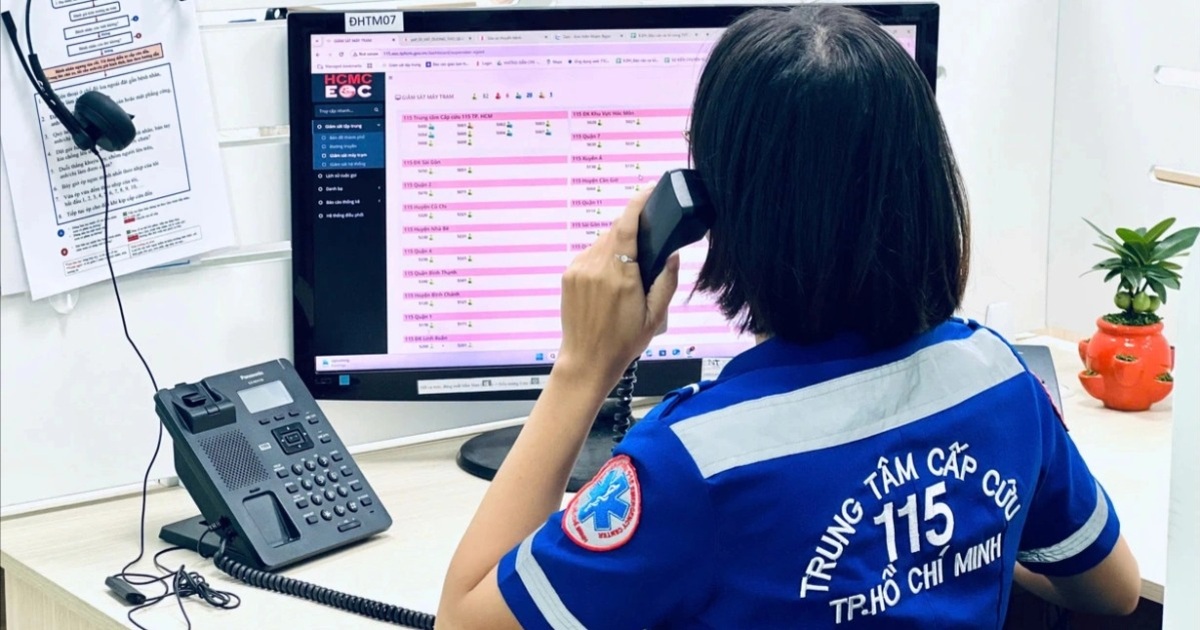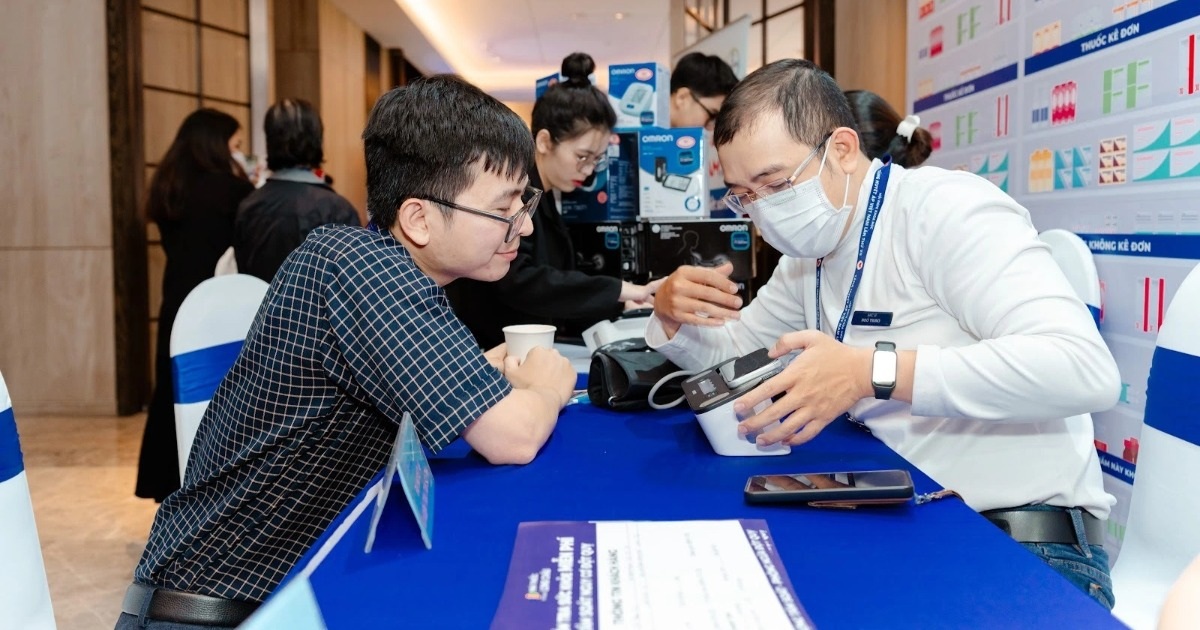On February 10, the Ho Chi Minh City Department of Health stated that developing a professional pre-hospital emergency system is not only an urgent requirement but also a strategic solution for large, densely populated cities to address healthcare, traffic, and urbanization challenges.
Ho Chi Minh City’s 115 Emergency Calls Increase 40-fold
In Ho Chi Minh City, before 2013, pre-hospital emergency activities were handled by only one hospital (Trung Vuong Hospital). With a mere 5 ambulances, this unit received approximately 5,000 calls annually, failing to meet the healthcare needs of the public.
Facing this reality, the health sector advised HCMC leadership to establish the 115 Emergency Center, simultaneously calling for the voluntary participation of public and private hospitals to serve as satellite emergency stations, located directly within the hospitals’ emergency departments.
Public and private hospitals participate as satellite emergency stations under three models. Model 1 involves the participating hospital entirely managing all human resources, vehicles, and equipment for the emergency station.
In Model 2, the 115 Emergency Center and the hospital collaborate on human resources, vehicles, and equipment for the emergency station. In Model 3, the 115 Emergency Center is responsible for all human resources, vehicles, and equipment, with the hospital providing infrastructure support.
Over the years, the number of satellite emergency stations has continuously increased. To date, HCMC has 44 satellite emergency stations, with the number of emergency calls via the 115 hotline increasing 40-fold compared to the period before 2013.
The HCMC Department of Health believes this demonstrates that the local pre-hospital emergency services have gained public trust.
Additionally, the locality has gradually implemented specialized emergency services, such as emergency care for psychiatric patients, individuals with depression considering suicide, stroke patients ensuring the golden hour for treatment, and multi-trauma patients using an inter-hospital red alert protocol.
Learning from International Pre-hospital Emergency Models
The HCMC Department of Health analyzed that the approach to handling emergency and critical situations in the community differs from that in hospitals, requiring scientific methods suited to real-world conditions. In Vietnam, pre-hospital emergency medicine is still very new.
Between 2013 and 2017, HCMC leaders organized two delegations to Australia to survey and learn from pre-hospital emergency experiences, identifying the “paramedic” model as a suitable direction.
After adopting Australia’s experience, HCMC’s health sector has gradually standardized coordination regulations between pre-hospital and in-hospital emergency care, strengthening the connection between hospitals and the 115 emergency system.
Pre-hospital emergency personnel are also trained according to standardized guidelines from the World Health Organization (WHO), the International Committee of the Red Cross (ICRC), and the International Federation for Emergency Medicine (IFEM).
Furthermore, Pham Ngoc Thach University of Medicine, in collaboration with Saimaa University of Applied Sciences (Finland), successfully developed and enrolled students in “Paramedic Nursing” training.
As a result, the local pre-hospital emergency force has gradually overcome many obstacles, fostering innovation towards greater professionalism.
Many specific solutions have since proven effective, such as: paramedic uniforms facilitating emergency personnel in various complex environments; two-wheeled ambulance models enabling faster access to patients in deep alleys and crowded events; and models for psychiatric and depression emergencies, among others.
During the strong outbreak of the Covid-19 pandemic, the health sector flexibly implemented many unprecedented solutions.
These include mobilizing taxis and passenger vehicles for emergency transport; establishing 5 field 115 emergency centers in the most patient-dense areas; and expanding the 115 hotline capacity to 100 lines, ensuring 24/7 call reception.
Nearly 1,500 Cardiac Arrest Cases “First-Aided via Phone”
To ensure the effective operation of the entire pre-hospital emergency system, since early 2021, the 115 Emergency Center, in collaboration with the HCMC Department of Information and Communications, has implemented an emergency dispatch software system.
This system optimizes call reception, analyzes emergency status in real-time, and automatically dispatches ambulances to the most appropriate locations.
Furthermore, the 115 hotline has implemented telephone-based first-aid consultation and guidance procedures, reassuring callers while empowering them to take necessary actions while awaiting the emergency team’s arrival, even providing remote first-aid instructions.
The telephone-guided CPR and foreign body airway obstruction first-aid procedures have truly contributed to saving many critical patients. In over one year of implementation, nearly 1,500 cases of cardiopulmonary arrest received telephone-guided first aid, increasing the successful CPR rate by 11%.
On March 26, 2024, the HCMC People’s Committee approved the project “Developing a Professional Pre-hospital Emergency System for the 2024-2030 Period.”
Accordingly, HCMC aims to establish three centers as part of its three specialized medical clusters: a 115 Emergency Center in the Tan Kien specialized medical cluster (Binh Chanh); a 115 Emergency Center in the central medical cluster; and a 115 Emergency Center in Thu Duc City.
Beyond road-based emergencies, HCMC will further research and implement air and waterway emergency services. Concurrently, the emergency reception and dispatch system will continue to be upgraded with artificial intelligence (AI) integration, aiding in emergency priority classification, resource optimization, and demand prediction.
The 2023 Law on Medical Examination and Treatment has stipulated that “pre-hospital emergency responders” must hold practice certificates. This will be a crucial prerequisite for the comprehensive development of pre-hospital emergency activities, from training to deployment and appropriate organizational structure.



